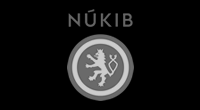 In recent days, there have been numerous reports in the media about users using freely available artificial intelligence tools to generate pornographic content involving both children and adults. For a layperson (and even for an expert), it is often very difficult to distinguish between an authentic photograph and a product of intelligent software utilizing artificial intelligence. The tools that allow for the generation of this content are freely available, making the creation of such content very easy - and also very dangerous.
In recent days, there have been numerous reports in the media about users using freely available artificial intelligence tools to generate pornographic content involving both children and adults. For a layperson (and even for an expert), it is often very difficult to distinguish between an authentic photograph and a product of intelligent software utilizing artificial intelligence. The tools that allow for the generation of this content are freely available, making the creation of such content very easy - and also very dangerous.
To begin with, it should be noted that artificial intelligence has always been connected to the world of pornography, and the first videos created using so-called deep fake technologies were related to pornography. Several years ago, advanced applications using neural networks and machine learning were already able to work with the human body, but their results were not great; the outputs were often low resolution, took a relatively long time to create, and were quite easy to recognize.

Reality or generated photo?
However, now, with the passage of time and technological advancements, products generated by artificial intelligence are becoming increasingly convincing, which poses a serious problem when it involves content that includes children or adults (not only) in compromising situations. In other words, artificial intelligence now, for example, offers the rapid and cheap production of child pornography, as well as the ability to literally undress any woman whose reference photo the software receives.
The first problem is certainly the violation of privacy - anyone can take our photo and create a compromising photo from it, which can then be spread across the internet, damaging our reputation, ruining our private life, or halting our career, etc. For now, men are at an advantage because commonly available tools for generating pornography usually place a "female body" on a "male head", but it is only a matter of time before tools targeting men are developed.
The generated nude body can also be misused in the context of criminal activity - these materials can make us targets of extortion, threats, intimidation, etc. This has also often happened in the past; phenomena such as sextortion or revenge porn are already well-known and documented - but they always used intimate materials that the victims provided (voluntarily or under pressure). Now, however, we are in a situation where anyone can obtain these materials - using just the common content of social networks - for example, Instagram. The tools that enable the generation of pornography are commonly available in the online environment (there is no need, for example, to download an AI model to your computer) - and it is expected that their number will increase.
A separate problem is, of course, the generation of child pornography, which can be created using suitable tools by anyone (including pedophilically oriented users). This is already happening - for example, recall the case from Spain, where child pornography was created using artificial intelligence by children aged 12-13. Another problem is that the flood of generated child pornography may make it difficult for police to identify whether actual harm has been done to a specific child or if it is just a product of digital technology.
From a legal perspective, computer-generated child pornography is not only considered to be photographs of real children (persons under 18 years of age) but also pornographic works featuring characters created, for example, through computer animation that realistically depict children. Therefore, photographs, videos, and even drawings created using artificial intelligence can be considered child pornography, and their creators can be prosecuted under the law.
Just for interest, according to the 2023 State of Deepfakes report, the number of deepfake videos increased by 550 percent compared to 2019, with 98% of all these videos being pornographic. In 99% of cases, women are depicted in the videos. Every third tool for creating deepfake videos also allows the creation of pornographic content.
Although it can be expected that various technologies will emerge to recognize generated content, in this case, the damage will already have been done - at the moment of publication and spread of the sensitive material across the network.
It is essential for states and international organizations to take steps to regulate and control generative artificial intelligence technologies that allow for the creation of such - often illegal - content. This includes introducing stricter laws regarding artificially generated pornography, creating standards for software tools that generate such content, and supporting research into technologies for recognizing and detecting deepfake content. We must also remember the importance of awareness and systematic education for all - both children and adults.
For E-Bezpečí
Kamil Kopecký
Palacký University in Olomouc
Sources:
https://www.investigace.cz/zesveta-detska-pornografie/
https://www.washingtonpost.com/technology/2023/06/19/artificial-intelligence-child-sex-abuse-images/
https://www.homesecurityheroes.com/state-of-deepfakes/#key-findings































